Noboribetsu Onsen Complete Guide
Respect for Nature & Bathing Etiquette in the "Department Store of Hot Springs"
Table of Contents
A Place to Feel the Earth's Breath. Welcome to the "Department Store of Hot Springs," Noboribetsu.
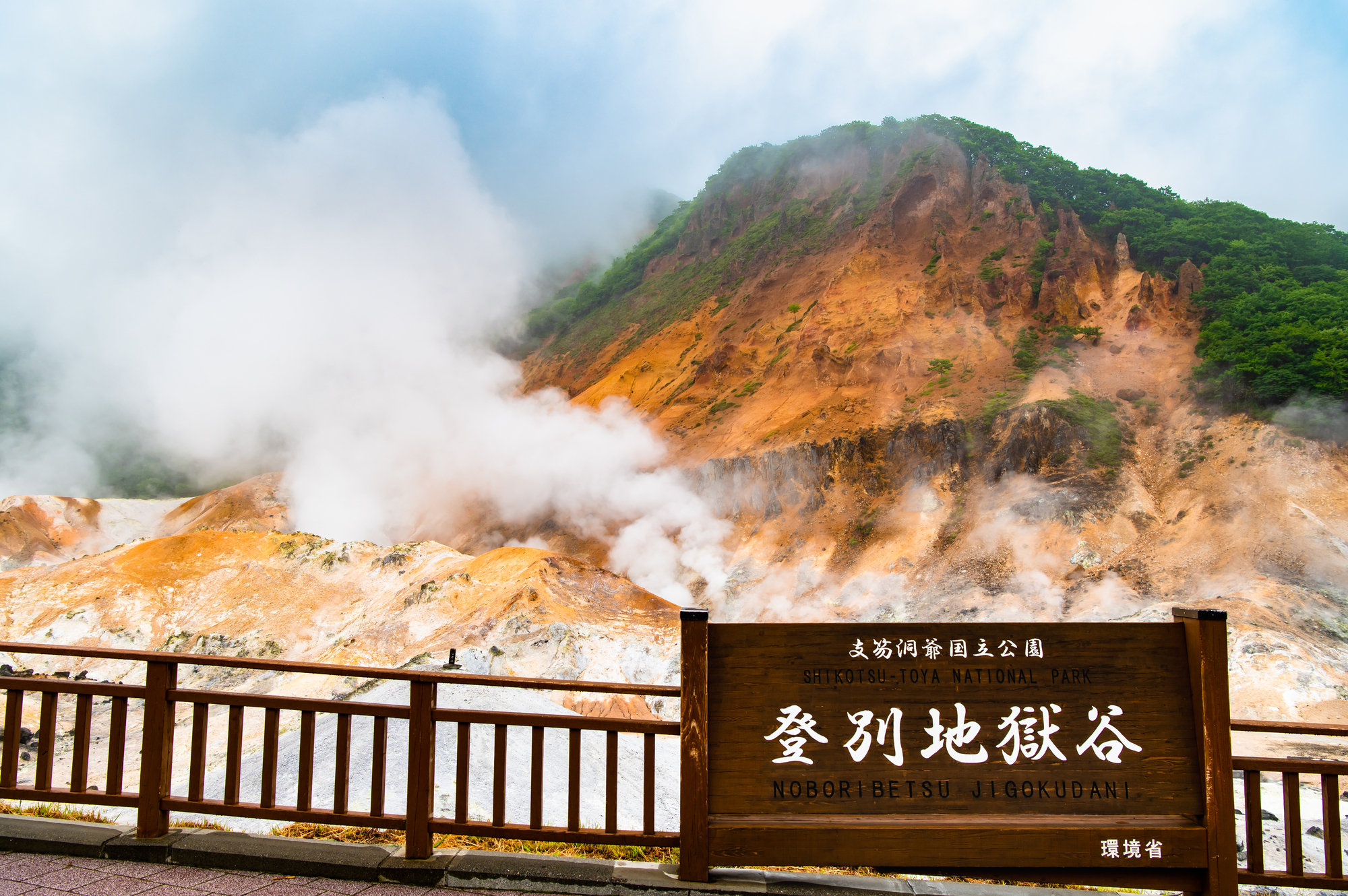
As you walk through a valley filled with billowing white steam and the smell of sulfur, you can hear a roaring sound, as if resonating from the depths of the earth. It is a raw, yet mystical landscape that makes you feel the planet is alive. This is Noboribetsu Onsen, a hot spring resort representing Hokkaido.
Noboribetsu Onsen is no ordinary hot spring destination. It's a place unparalleled in the world, nicknamed the "Department Store of Hot Springs" because nine different types of hot spring water gush out in one location. From milky white sulfur springs and reddish-brown acidic iron springs to clear simple thermal springs, the wide variety of waters deeply heal the body and soul of visitors.
This guide is your manual to fully enjoy this onsen paradise, and at the same time, to pay respect to the powerful forces of nature. A trip to Noboribetsu Onsen requires you to enjoy the blessings of nature while understanding its dangers and acting safely. The manners introduced here are our important promises as travelers to learn the basic etiquette of Japanese onsen culture and to pass this dynamic environment on to the future.
Now, take a deep breath and feel the energy gushing from the center of the Earth. An ultimate healing journey that will wash away all your daily fatigue begins.
1.Legends of Demons and Steam: The History and Nature of Noboribetsu Onsen
Why do so many different types of hot springs gush out in this place, and why did "Oni" (demons) become the town's symbol? The background is a story woven from the Ainu language, volcanic activity, and human imagination.
1-1. The Ainu Word "Nupur-pet": A Story of a White, Murky River
The name "Noboribetsu" originates from the Ainu word "Nupur-pet," meaning "a white, murky, thick river." This describes how the hot spring minerals flowed into the river, turning it cloudy white. For the indigenous Ainu people, this place has long been cherished as a medicinal bath to heal illnesses and as a sacred site.
1-2. Why is Noboribetsu a Town of "Oni"? The Legend of the "Yukijin"
The symbol of Noboribetsu Onsen is the statues of "Oni" (Japanese demons or ogres) you see everywhere. This comes from the fact that the rugged landscape of Jigokudani (Hell Valley) was reminiscent of the "hell" where demons are said to live in Buddhism. However, the demons of Noboribetsu are not fearsome beings that do evil. They are beloved by the people as "Yukijin," hot spring guardian demons who ward off illness and misfortune. Every winter, the "Noboribetsu Onsen Hot Spring Festival" is held, where these Yukijin pray for people's happiness.
1-3. The Miracle of Nine Spring Qualities: Why Noboribetsu is Called the "Department Store of Hot Springs"
The greatest attraction of Noboribetsu Onsen is the abundance of its water types. Nine different types of springs gush forth: Sulfur, Salt, Aluminum, Mirabilite, Melanterite, Iron, Acidic Iron, Bicarbonate, and Radium. This is because the area is in an active volcanic zone. Groundwater heated by magma deep underground absorbs various mineral components as it passes through different geological layers, creating this "Department Store of Hot Springs."
1-4. [2025 Update] Trail Maintenance and New Experience Programs
In Noboribetsu Onsen, nature trails around Jigokudani and Oyunuma Pond have been made more accessible, and nighttime illuminations like the "Onibi no Michi" (Demon Fire Path) have been set up, allowing more people to safely enjoy the fantastical scenery. Additionally, experience programs to learn about Ainu culture and the development of new local gourmet foods are underway, continually adding to the attractions beyond the hot springs.
2.Preparations & Basic Info: Enjoying the Onsen Heaven Safely
To experience dynamic nature, correct knowledge and preparation are essential.
2-1. Complete Access Guide from New Chitose Airport/Sapporo
- Express Bus (Recommended): Direct express buses run from New Chitose Airport and Sapporo Station to Noboribetsu Onsen (approx. 1 hour to 1 hour 40 mins). It's convenient with no transfers, even with large luggage.
- Train (JR): From New Chitose Airport Station or Sapporo Station, take the Limited Express "Hokuto" or "Suzuran" to Noboribetsu Station. From Noboribetsu Station, it's about a 15-minute ride by local bus or taxi to the onsen town.
- Rental Car: Convenient if you plan to visit nearby places like Lake Toya, but be very careful when driving on snowy roads in winter.
2-2. Exploring the Onsen Town: From Jigokudani to Oyunuma and the Natural Footbath
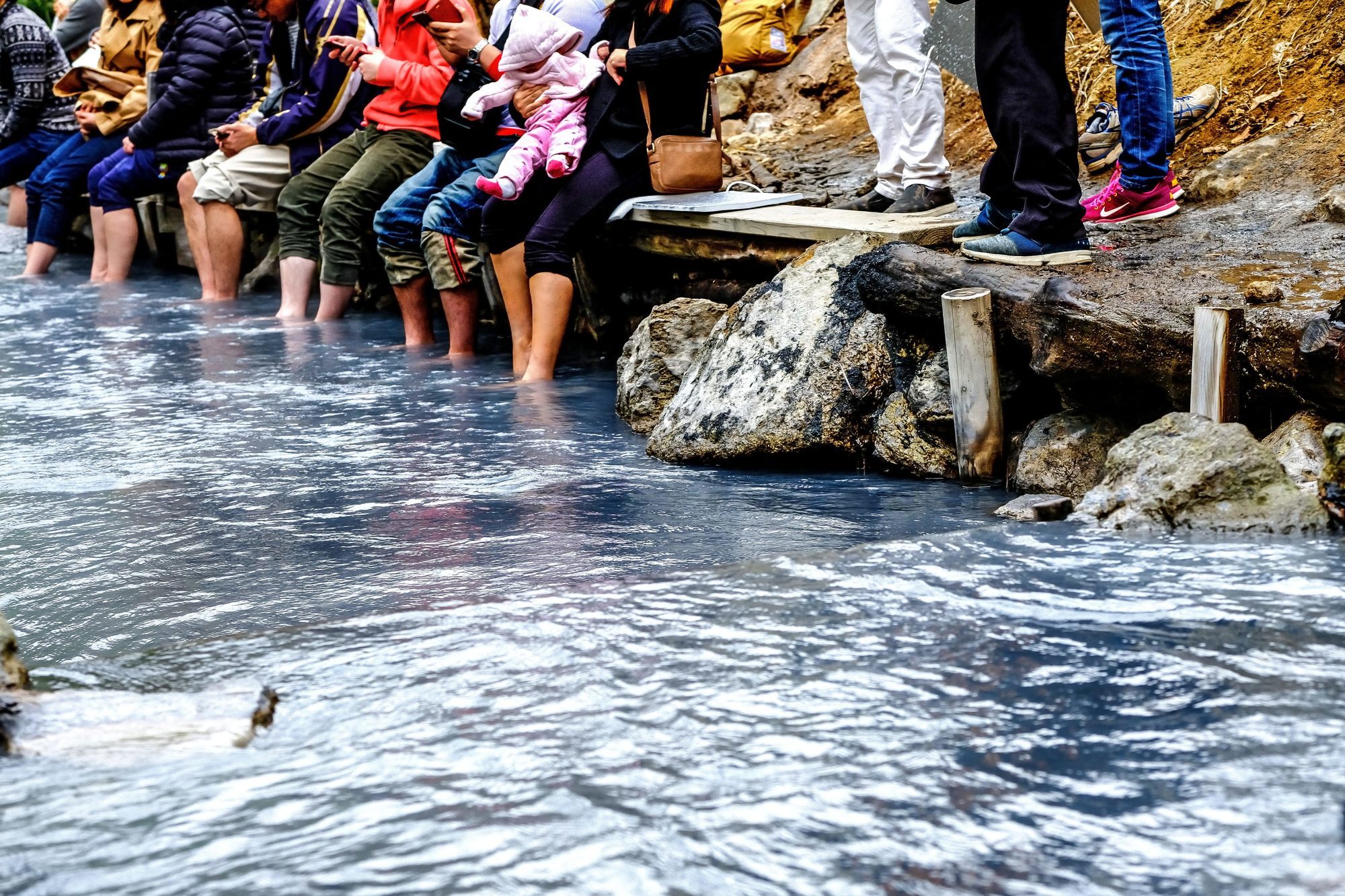
The highlights of Noboribetsu Onsen are spread out within walking distance of the onsen town.
- Jigokudani (Hell Valley): The largest source area right next to the town. A walking path allows you to feel the power of the steam and volcanic activity up close.
- Oyunuma & Oku-no-yu Ponds: A short walk from Jigokudani, these are ponds of boiling, gray thermal mud. The contrast with the autumn leaves or winter snow is beautiful.
- Oyunuma River Natural Footbath: You can enjoy a natural footbath in the onsen river that flows from Oyunuma Pond. A footbath in the forest is a special experience.
2-3. Volcanic Gas and Winter Climate: Essential Safety Information
- Volcanic Gas: Volcanic gases (such as hydrogen sulfide) are present around Jigokudani. While they do not normally affect health, those with asthma, bronchial or heart conditions, or who are not feeling well, should refrain from entering or limit their visit to a short time.
- Winter Climate: Hokkaido's winters are severe, with temperatures dropping below freezing. Full winter gear (down jacket, hat, gloves) and non-slip winter shoes are essential. The walking paths are often icy, so walk with caution.
3.[Crucial] Awe of Nature and Bathing Manners: 6 Rules to Keep in Noboribetsu
Let's receive the blessing of the earth, the onsen, with a heart of respect and gratitude.
3-1. In Jigokudani: The Walking Path is Your "Lifeline." Never Stray from it.
Straying from the walking path in Jigokudani is extremely dangerous. The ground may have boiling water or hot steam erupting from places that are not visible. One wrong step could result in severe burns. Always stay on the designated path. Cultural Context: The Japanese view of nature as both a blessing and a threat. The Japanese have long lived with harsh nature, including earthquakes and typhoons. Therefore, they understand the duality of nature as something that gives beautiful blessings but is also a force to be feared. The rule of not straying from the path is an expression of this awe of nature. |
3-2. The Complete Onsen Etiquette: The Culmination of Japan's "Bath Culture"
Noboribetsu is a classic of Japanese onsen culture. Learn the proper bathing etiquette for the best onsen experience.
|
3-3. In Large Hotels: Smart Behavior at Buffets and in Grand Baths
Noboribetsu has many large hotels, and meals are often buffet-style. Take only as much food as you can eat and avoid waste. In the grand baths, refrain from saving spots at the washing area or speaking loudly, and share the relaxing atmosphere. Cultural Context: The "Mottainai" spirit and moderation in public spaces. The spirit of "mottainai," which means not wasting food, is a Japanese virtue. In public spaces where many people gather, it is expected to act with moderation and consideration for others, rather than being self-centered. |
3-4. Distance from Wildlife: Watch from Afar, Do Not Feed
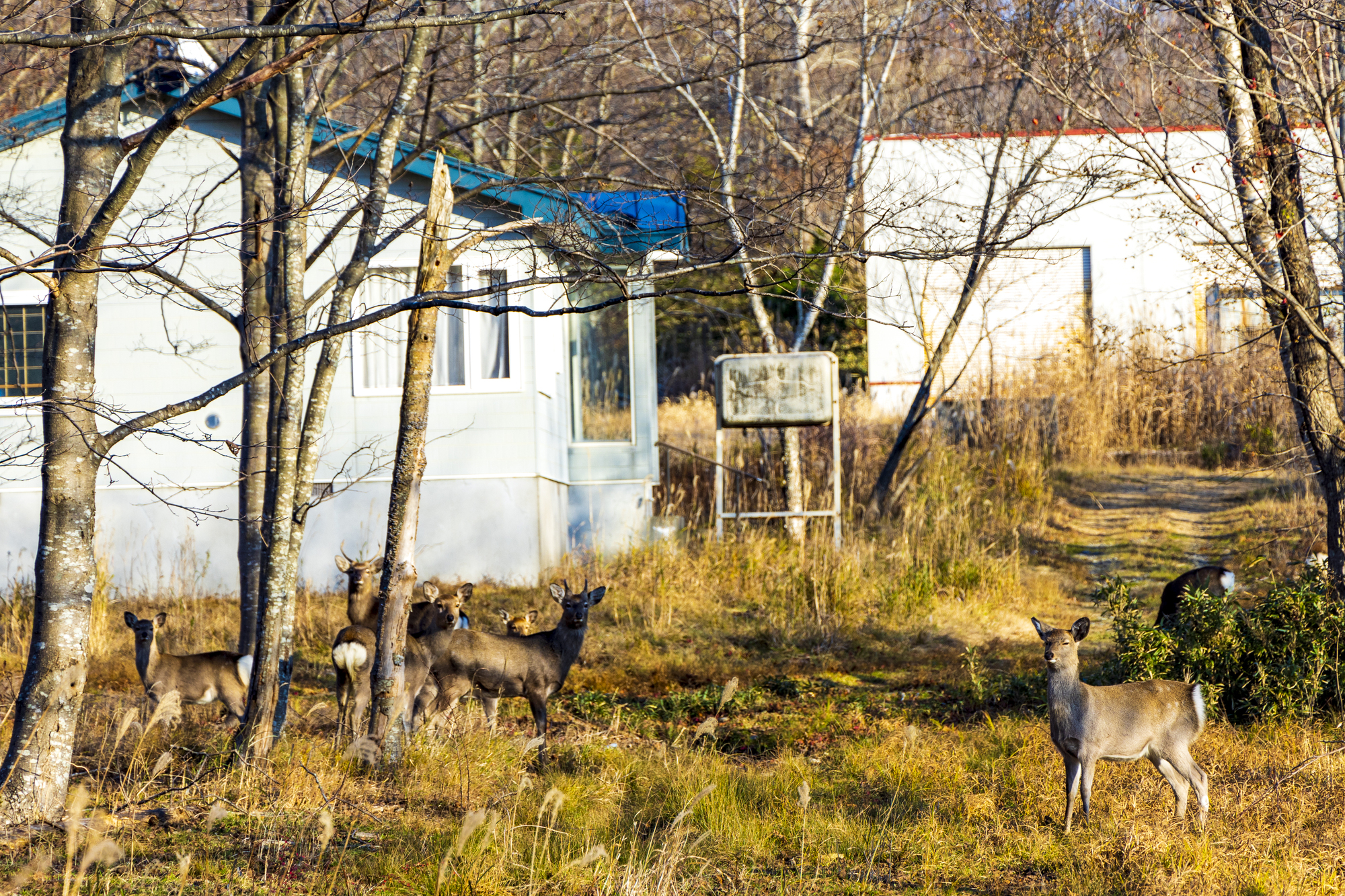
You may encounter wild animals such as Ezo deer and red foxes around Noboribetsu. No matter how cute they are, never feed them. Human food can harm their health and disrupt the ecosystem. Watching quietly is the best expression of love. Cultural Context: Respecting the laws of nature and not intervening. In the Japanese view of nature, there is an idea that humans should not carelessly intervene in the laws of nature for their own convenience. Keeping an appropriate distance from wild animals is an expression of this respect. |
3-5. Respect for the "Oni": Treating the Symbol Statues with Care
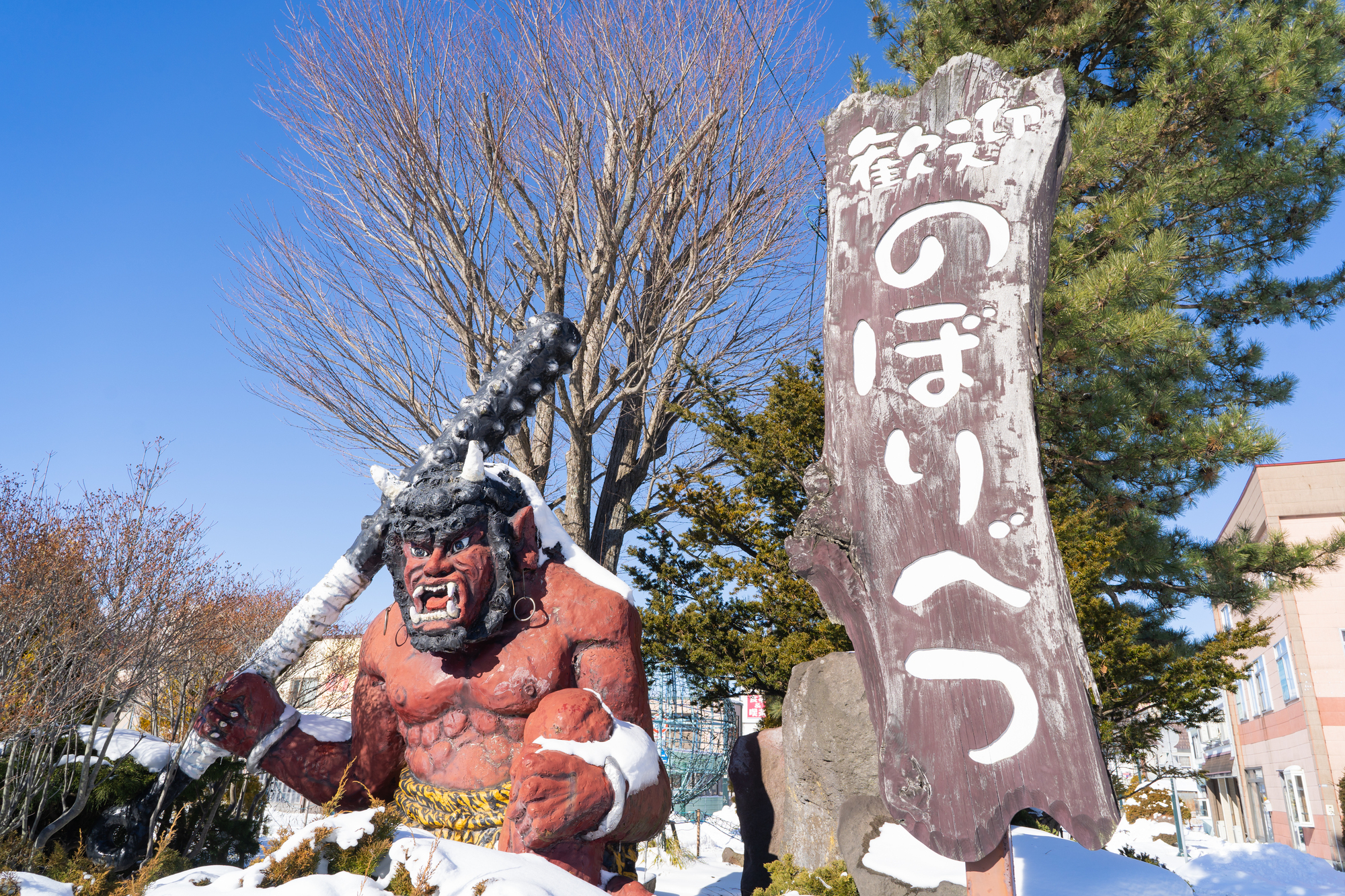
The demon statues found throughout the onsen town are symbols of the town and its guardian deities. You are free to take pictures, but never climb on or damage the statues. Cultural Context: Character culture and the affection and respect for its subjects. In Japan, there is a deep-rooted culture of cherishing and feeling affection for mascot characters. The demons of Noboribetsu are also important characters to the townspeople. Visitors are expected to show them the same respect. |
3-6. Privacy Beyond the Steam: Consideration for Where You Photograph
Photographing in places related to hot springs, like Jigokudani, is tempting. However, if there are open-air baths nearby, be extremely considerate not to include other bathers in your shots. Of course, photography inside the bathhouses is strictly forbidden. Cultural Context: The "naked communion" of onsen and the trust required for it. Onsen is a place for "hadaka no tsukiai" (naked communion), where people can open up, free from their social status. This special space is built on mutual trust that privacy will be protected. |
4.Feeling the Power of Noboribetsu with Your Whole Body: Seeing, Soaking, and Experiencing
4-1. Breathtaking Natural Landscapes: Jigokudani, Oyunuma, and Oku-no-yu
4-2. Experiencing Different Spring Qualities: Finding the Perfect Onsen for You
4-3. Entertainment Unique to Noboribetsu: The Bear Park and Date Jidaimura
At the "Noboribetsu Bear Park," which you can reach by ropeway from the onsen town, you can observe brown bears up close. At "Noboribetsu Date Jidaimura," a theme park that recreates the townscape and culture of the Edo period, you can enjoy ninja and samurai shows, which are popular with families.
5.Planning Your Trip: Model Itineraries for Onsen Indulgence
5-1. [1 Night, 2 Days] Enjoying the Best of Noboribetsu! A Jigokudani and Onsen Hotel Stay Course
- Day 1:Take a bus from New Chitose Airport or Sapporo to Noboribetsu Onsen. After checking into your hotel, take a walk through Jigokudani. At night, enjoy the illuminated "Onibi no Michi."
- Day 2:After enjoying a morning bath, take a walk to Oyunuma Pond and the natural footbath. Look for souvenirs in the onsen town and head back by an afternoon bus.
5-2. [2 Nights, 3 Days] A Deep Dive into Nature and Culture! A Greedy Course with Side Trips
- Day 1: Arrive in Noboribetsu Onsen. Stroll through Jigokudani and enjoy the various types of hot springs at your hotel.
- Day 2: In the morning, visit the "Noboribetsu Bear Park." In the afternoon, time-slip to the Edo period at "Noboribetsu Date Jidaimura." At night, see the Enmado (Hell Judge's Hall) karakuri float.
- Day 3: After checking out, take a short trip to "Upopoy (National Ainu Museum and Park)" to experience Ainu culture before heading home.
The Energy from the Earth to Take Home with You
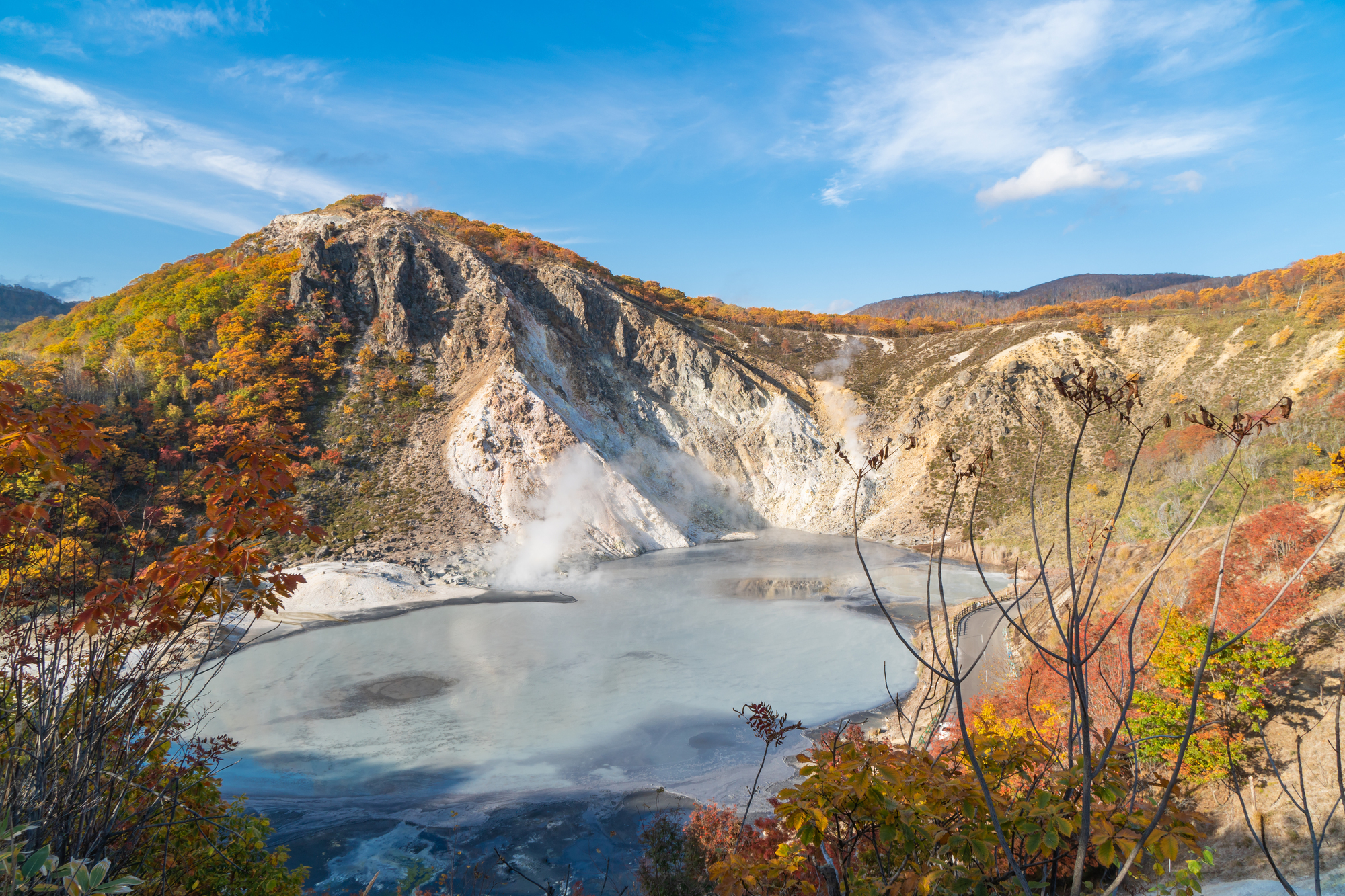
When you finish your trip to Noboribetsu, your body will be warmed from the core, and your mind will be filled with deep tranquility. The greatest souvenir you can get from this place, more than beautiful photos, is the very energy, full of life force, that gushes from the depths of the earth.
Being grateful for this powerful blessing of nature and enjoying the onsen by following its rules. This humble attitude is the best way to interact with this place. And that experience will undoubtedly give you new vitality in your daily life.

